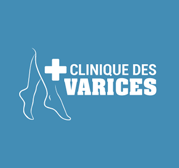WHAT ARE VARICOSE VEINS?
Varicose veins are enlarged veins which are generally green or blue in colour. They are swollen and raised above the surface of the skin – often appearing twisted and bulging.
Most commonly found on the legs, varicose veins are a condition that is more often experienced in women than men, although men are still susceptible.
HOW DOES VARICOSE VEIN DEVELOP?
Your veins carry blood from the tissues where it supplies oxygen and nutrients, back to the heart so it can be replenished and recirculated. In the lower limbs, leg muscles contract to help 'pump' blood upward and toward the heart. All veins except the vena cava near the heart have tiny "one-way" valves inside to keep blood flowing toward the heart.
A malfunction in one or more of these valves leads to backward flow, especially when we are standing. This backward flow creates pressure causing the dilated ropy visible veins we call varicose veins. Many circumstances related to your health and lifestyle can lead to your veins becoming enlarged. These include pregnancy, obesity, injury, genetics, and occupation.
WHAT ARE THE SYMPTOMS OF VARICOSE VEINS?
Varicose veins are often painful due to the high pressure inside the vessel, especially when standing or sitting for prolonged periods. Blood flow is often sluggish or stagnant in these veins, and sometimes leads to blood clots in these superficial veins which causes inflammation known as phlebitis, with symptoms of redness and painful swelling. Varicose veins are also usually visible as swollen or bulging vein in the legs, feet or ankles. Varicose veins may be accompanied by swelling, or edema, usually below the knee. Patients may experience itching and aching over the affected veins, especially when they have been standing or sitting for a prolonged period. Heaviness, fatigue, and restlessness are also common. Varicose veins are part of the larger spectrum of chronic venous insufficiency, or CVI. In the later stages of CVI, skin discoloration and inflammation in the lower legs, usually around the ankles, is common. This may ultimately result in breakdown of the skin, known as venous ulceration.
WHAT ARE THE COMPLICATIONS THAT MAY ARISE?
In the absence of treatment, these symptoms and the state of the veins (increase in the number and calibre of varicose veins) worsen.
Depending on the duration of disease, and its evolution, complications can occur:
skin pigmentation eczema inflammation ulcer formation superficial vein thrombosis (blood clots within a vein), which can extend to deep veins rupture of veins with bleeding, even in the absence of trauma
